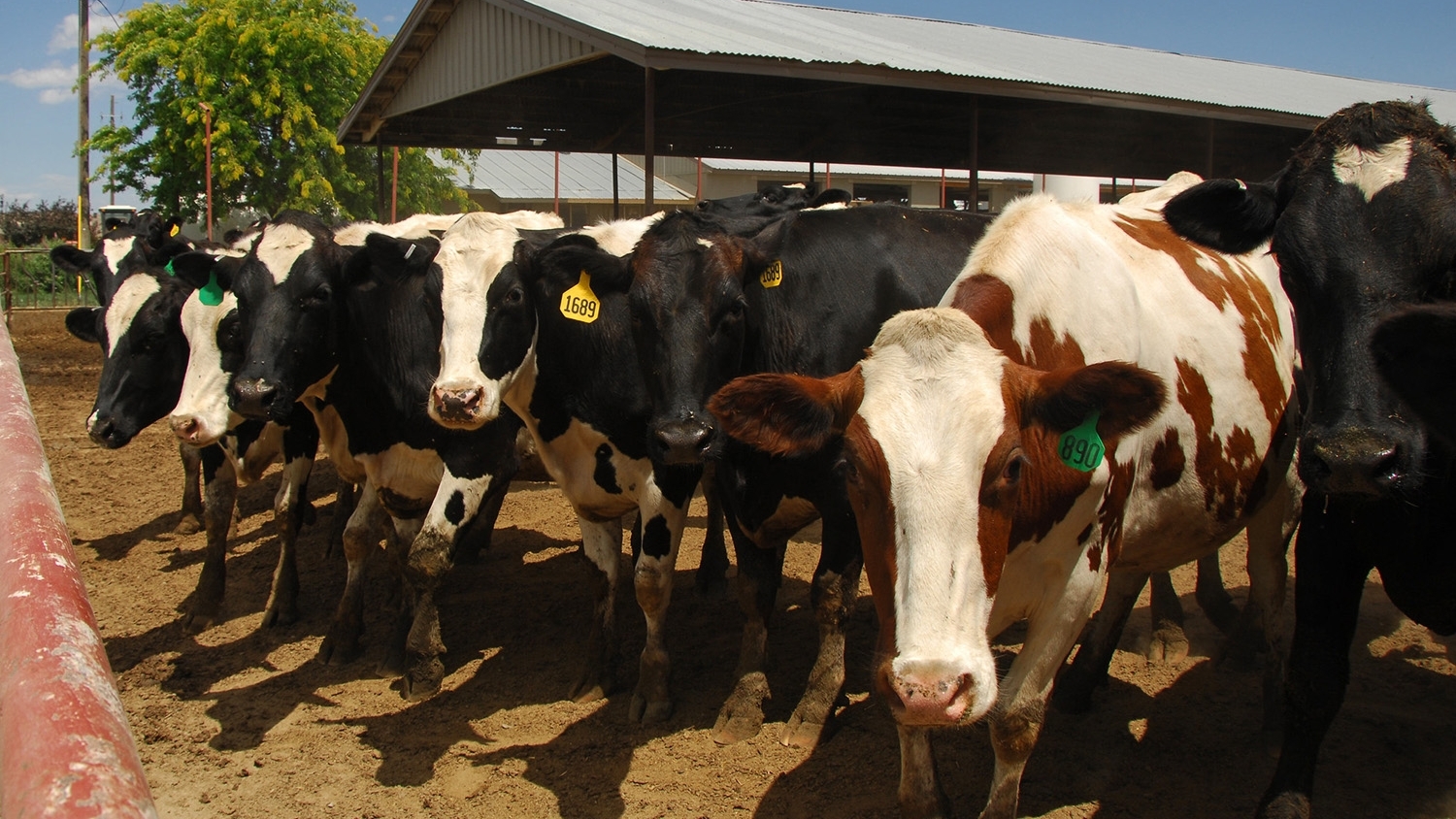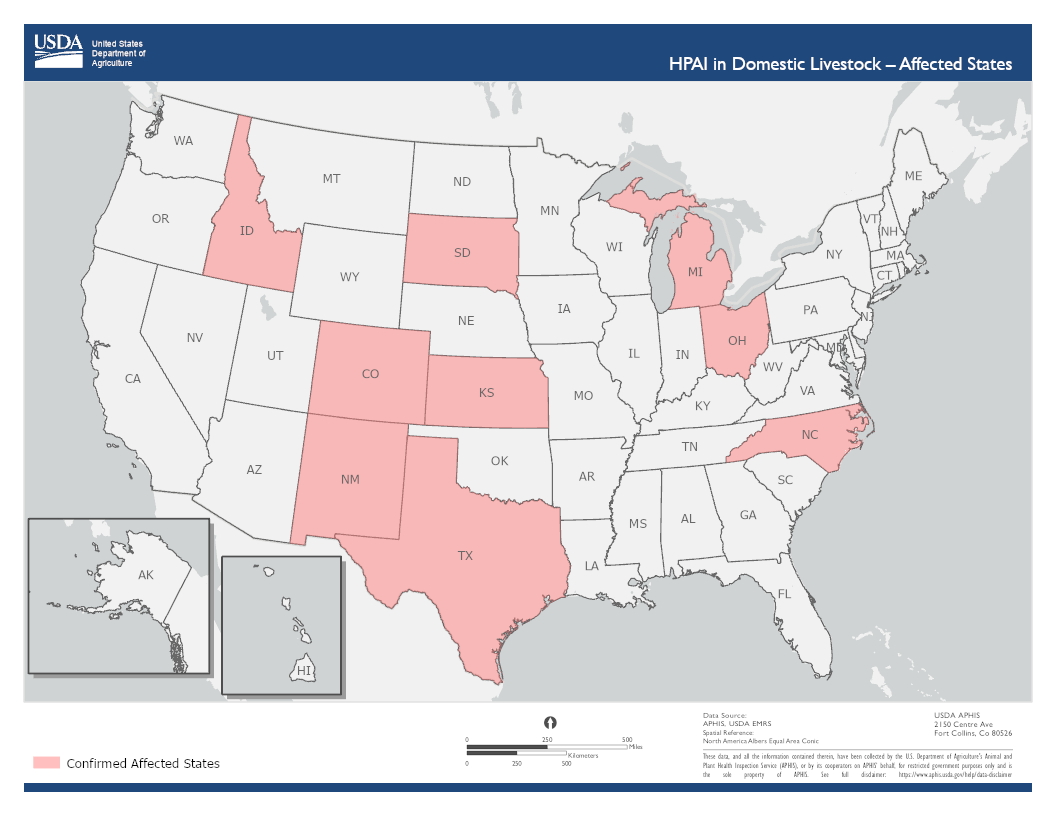
The United States Department of Agriculture (USDA) has announced that Highly Pathogenic Avian Influenza (HPAI) has been detected in domestic livestock, specifically dairy cows. The USDA's Farm Service Agency offers direct and guaranteed loans to farmers and livestock producers for biosecurity measures such as installing physical barriers, purchasing disinfectant, footbaths, disposable footwear and clothing, veterinary costs related to vaccination and general animal health testing of feed and water sources for toxins or other disease. The USDA also provides resources available for producers including a Loan Assistance Tool that helps producers navigate the farm loan process with an interactive step-by-step guide, a Service Center Locator tool which assists farmers in finding their local USDA service center, and Farm Loans Overview Factsheet which provides information on all FSA direct and guaranteed loans. The CDC is monitoring virus risk to humans from H5N1 avian flu cases in mammals including cattle herds across four states and a dairy worker in Texas who tested positive after working with cattle.







